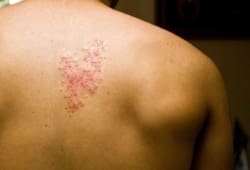
The human hand has 27 bones—3 in each finger except the thumb, which has 2. When you hurt a finger, you may have injured one of the bones, your joints, connective tissues, or tendons. If so, your doctor may advise you to complete finger exercises.
Exercising your finger after an injury can make it stronger and easier to move. However, you shouldn’t start these exercises until your doctor says it is safe.
Path to improved health
By exercising your injured finger each day, you can help to combat your pain and increase flexibility. Performing these exercises regularly may help your finger return to its healthy state:
Exercise: Range of Motion
This exercise can help you straighten your finger, which will make it easier to move.
To do this exercise, use your uninjured hand to slowly straighten and bend the injured finger. Hold it straight then slowly bend it.
Exercise: Finger Extension
This exercise also makes it easier to straighten your finger.
To do this exercise, put your injured hand flat on the table, palm facing down. Lift each finger one at a time.
Exercise: Grip Strengthening
This exercise can make your finger stronger.
To do this exercise, make a fist with your injured hand and hold it for several seconds. You can do this exercise using only your hand, or you can squeeze a ball (for example, a soft “stress” ball or a tennis ball). If you use a tennis ball, make a cut in the side of the ball to make it easier to squeeze.
Exercise: Object Pick-up
This exercise can improve fine motor skills, such as writing or tying your shoes.
To do this exercise, pick up small objects such as coins, marbles or buttons with the injured finger and the thumb.
Things to consider
It’s possible that you may not be able to complete all of the above exercises, or that moving your finger in certain ways may actually worsen your injury. Do not attempt to self-diagnose what is wrong with your finger. See your doctor to learn what is wrong and what you can do to help.
Questions to ask your doctor
- When should I start to see improvements?
- What should I do if my finger starts to feel worse?
- Are all of these exercises appropriate for my injury?
- Are there any daily activities I should refrain from doing while my finger heals?
- When will my finger be able to move normally?
![]()
Copyright © American Academy of Family Physicians
This information provides a general overview and may not apply to everyone. Talk to your family doctor to find out if this information applies to you and to get more information on this subject.






